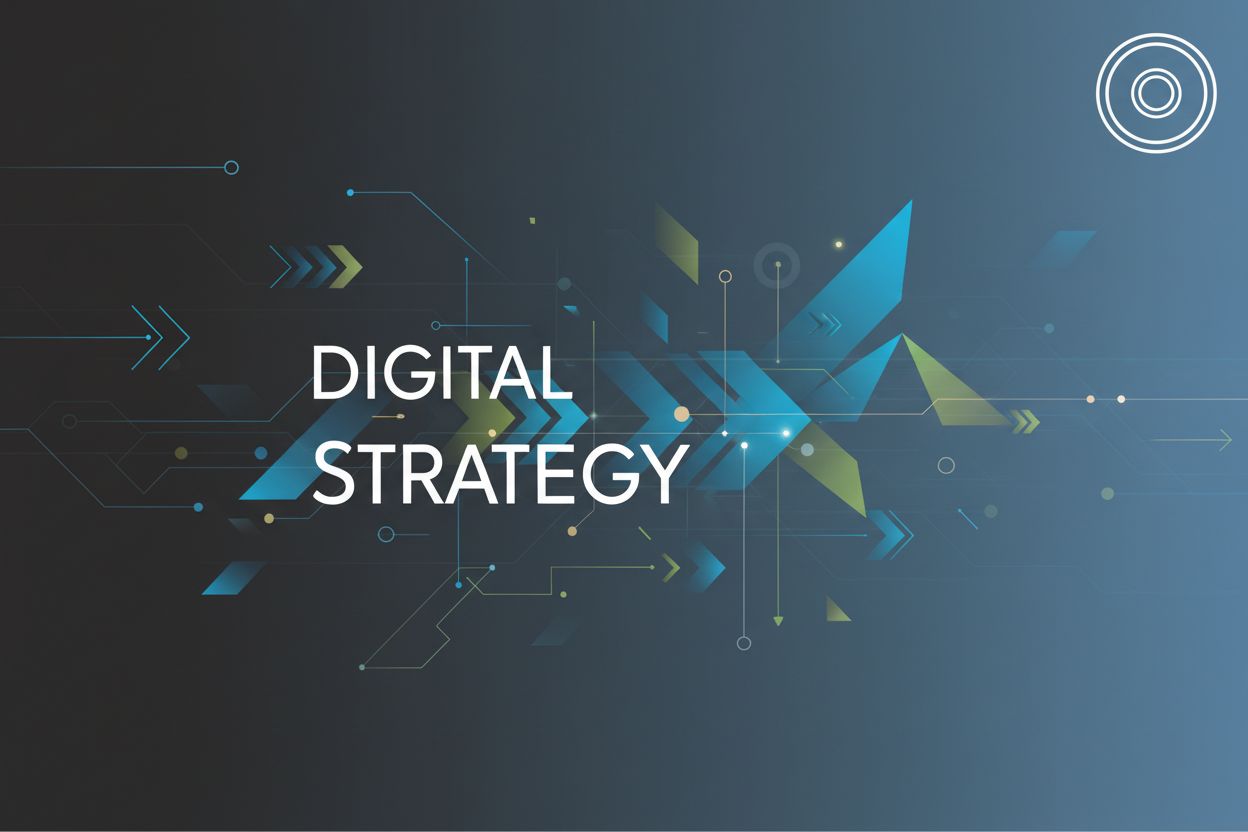Digital Transformation Strategy Guide: How to Achieve Success
TL;DR
Understanding Digital Transformation: More Than Just Tech
Okay, let's dive into digital transformation (dx). It's a phrase you hear everywhere, right? But it's way more than just slapping some new software on old systems--trust me, I've seen companies make that mistake!
It's about fundamentally changing how a company operates, from top to bottom. Think of it as a company-wide renovation project, only instead of knocking down walls, you're rethinking the entire business model around new tech.
It's not just about upgrading software, it's about shaking up the company mindset. It means getting everyone on board with the idea that things can and should be done differently.
One of the most imporant things to remember is that it's about rethinking processes. It's about asking, "How can tech make this easier, faster, better?"
Freeing up time for innovation and collaboration is a core goal. Automating those tedious, repetitive tasks? That's the sweet spot. For example, in healthcare, ai can handle initial patient screening, letting doctors focus on complex cases.
Making smarter, data-driven decisions is the name of the game. Accessing and analyzing real-time data to make informed choices helps to stay ahead of the curve.
Improving customer experience across all touchpoints is essential. this could mean personalizing marketing campaigns or providing faster customer service, whatever makes the customer journey awesome.
Staying ahead of the competition and adapting quickly is what it's all about. Digital transformation isn't a one-time thing; it's an ongoing journey of learning and improvement.
Business outcomes are the foundation, not the shiny new tech. It's about what you achieve with the technology, not just having it.
It requires changes to strategy and implementation over time, not a static project.
Constant reevaluation of digital solutions is essential to make sure what you're using still makes sense.
Digital transformation is a process, not a project. So, what does that mean for your business? Well, that's a question we'll tackle next.
Why a Digital Transformation Strategy is essential
Digital transformation, huh? Think of it as trying to drive cross-country without a map—possible, but you'll probably end up in the wrong state! That's why a digital transformation strategy is totally essential.
- Without a clear strategy, you're basically throwing tech at problems randomly. It's like trying to fix a leaky faucet with a hammer--probably not gonna work. A digital transformation strategy helps you focus your efforts where they matter most.
- A plan is like having a GPS for your company's evolution. It ensures you're moving toward a specific destination instead of just wandering around and hoping for the best.
- think of it like, you have a destination, and that destination is "success". a plan ensures you have a map to follow for your evolution, you are not just wandering aimlessly and hoping to stumble across your goals.
A digital transformation strategy isn't just about tech, it's about people.
- It ensures that everyone is rowing in the same direction, and it helps to prioritize where to spend money, time, and effort.
- It breaks down silos, ensuring that marketing, sales, and customer service are all working together towards common goals, rather than competing.
- And get this, it touches every part of your business, it's not just for the it department anymore.
A digital transformation strategy also helps you anticipate problems and track progress.
- It's like having a weather forecast for your business, helping you prepare for potential storms like data breaches.
- According to DigitalMara, a digital transformation roadmap helps foresee potential risks and challenges.
- It defines clear KPIs, so you know whether you're actually getting somewhere.
So, with a solid digital transformation strategy in place, you're much more likely to reach your goals. Now, let's talk about aligning objectives and adding value...
Key Elements of a Winning Digital Transformation Strategy
Okay, so you're thinking about kicking your digital transformation strategy into high gear? Awesome! But before you dive in, let's make sure you've got all the right ingredients. It's like baking a cake – you can't just throw stuff in and hope for the best, right?
You absolutely need a strong leader. I'm not talking about just anyone; I'm talking about someone who can really articulate the vision. They need to paint a picture of what the future looks like in inspiring terms, not just tech jargon. This vision needs a clear roadmap--something that everyone can understand, from the ceo to the intern.
And it can't just stop there. you need c-suite buy-in with active support and commitment. If the big bosses aren't on board, it's gonna be an uphill battle, trust me.
Think of your customer experience as the heart of your strategy, pumping life into everything. And it's not just about slapping a new user interface on your website; it's about genuinely understanding what your customers need and using digital tools to make their lives easier.
Personalized touchpoints are key--and I mean really personalized, not just "Hi [First Name]!" Data-driven insights are also your friend here; use them to anticipate pain points and smooth out those digital journeys.
Now, this is where things can get tricky. You're not just implementing new tech; you're changing the way people work together. This means rethinking familiar processes and encouraging a growth mindset across teams.
Communication is key--and I mean really clear communication about the "why." People need to understand the benefits of these changes, not just feel like they're being forced to do something new. Involve people early, get their feedback, and make them feel like they're part of the process.
A successful dx strategy needs to be built around data-driven decisons. It's not enough to just collect data; you need to use it to inform and accelerate your business's evolution.
First, foster a data-centric culture across your entire organization. Then, invest in tools and systems to gather, analyze, and act on insights in real time.
Digital transformation isn't a static process; it's an evolving journey. Weave continuous improvement into every aspect of your business model, iteratively refining processes and technology over time.
Build frequent assessments into your strategy to measure the impact of your initiatives. Have the flexibility to pivot if necessary, and gather feedback from your team and customers to stay responsive to their needs.
So, you've got your key elements down. Now, let's talk about how to build that digital transformation strategy from the ground up.
The Role of AI in Supercharging Your Digital Transformation
Alright, let's talk AI – it's not just for sci-fi movies anymore, it's seriously changing digital transformation. But how?
- NLP is huge for understanding customers and employees. Forget generic emails; ai can analyze communications to personalize interactions, making everyone feel heard. Think chatbots that actually understand what you're saying, not just spitting out canned responses.
- Generative ai creates content that's actually good. It's not just about churning out articles; it's about tailoring content to individual needs. Imagine personalized training programs for employees or hyper-targeted marketing campaigns.
- It just makes people more engaged. When things are personalized and relevant, folks pay attention. this isn't just about selling more; it's about building real relationships.
And, see, that's how ai helps you engage better. But ai does even more than that, so get ready, because next up is automation and smarter decisions!
Step-by-Step: Building Your Digital Transformation Strategy
So, you're ready to build a digital transformation strategy, huh? It's like planning a road trip – you wouldn't just jump in the car and start driving without knowing where you're going, would ya? Let's get started.
First things first, you gotta know where you are before you can figure out where you're going. That means taking a good, hard look at your current digital tools, your processes, your company culture – the whole shebang. What's working? What's a total dumpster fire? Don't sugarcoat it.
- Do a deep dive on your existing digital tools. Which ones are actually helping, and which ones are just gathering dust? Are your systems talking to each other, or are they all operating in their own little silos?
- Don't forget to check out your company culture. Is everyone on board with digital transformation, or are some folks resistant to change? A successful transformation needs buy-in from the top down.
- Get your hands on some data. Both the hard numbers and the squishy feelings. What do your customers think? What are your competitors doing? Dig into those customer surveys, competitor reports, and internal metrics.
Okay, now that you know where you're starting from, it's time to figure out where you want to end up. What does success look like for your company? What are your long-term aspirations? What about the short-term wins? Get specific.
- Make sure your dx goals line up with your overall company strategy. Are you trying to boost revenue, improve customer satisfaction, or enter a new market? Your digital transformation should support those goals.
- Set some SMART goals – Specific, Measurable, Achievable, Relevant, and Time-bound. “Increase customer satisfaction by 15% in the next year” is a much better goal than "make customers happier."
- Figure out what metrics you're going to track. Customer retention rates? Revenue growth from digital channels? Website traffic? Pick the ones that matter most to your business.
This ain't a solo mission. Digital transformation is a team sport, so you gotta get everyone involved. Break down those departmental silos and get people from all over the company working together.
- Include folks from IT, marketing, sales, customer service, HR – the whole gang. Different departments have different perspectives, and you need to hear them all.
- Identify some project leaders who can champion the digital transformation and keep everyone motivated. These are the folks who will keep the project on track and make sure everyone is pulling in the same direction.
- Promote open communication. Encourage people to share their ideas, concerns, and feedback. The more everyone feels like they're part of the process, the more likely they are to buy in.
Alright, time to map out your route! Break the journey down into smaller, manageable steps. Think of it like planning a cross-country road trip – you wouldn't try to drive the whole thing in one day, would you?
- Start with some quick wins to build momentum and show early value. These could be small projects that deliver immediate results, like automating a simple task or improving a key landing page.
- Map out your key milestones, timelines, and resources. What needs to happen when? Who's responsible for what? What resources are you going to need?
- Don't forget to consider interdependencies. How do different projects and initiatives rely on each other? Make sure you're not trying to do things out of order.
Now for the fun part – picking out the shiny new toys! Use those gaps and goals you identified earlier to guide your technology choices. Don't just pick the latest buzzword-compliant gadget.
- Think about scalability. Will this technology still work for you in five years? What about security? User-friendliness? Vendor reputation?
- Don't be afraid to test things out. Run some pilots before you commit to a full rollout. See what works, what doesn't, and adjust accordingly.
- Remember, it's not about the tech itself, it's about what you do with it. Focus on how the technology will help you achieve your business goals.
As MIT Sloan Executive Education points out, it's crucial for companies to use a model that works specifically for them.
Digital transformation isn't a one-and-done project; it's an ongoing cycle. Keep measuring your progress using those kpis you set earlier. What needs improvement?
- Gather feedback from employees and customers. What are they saying? What are they experiencing? Use that feedback to tweak your strategy over time.
- Stay up-to-date on market trends and new technologies. The digital landscape is constantly evolving, so you need to be ready to adapt.
- Remember, digital transformation is a journey, not a destination. Keep learning, keep adapting, and keep improving.
And now that you've laid the groundwork for your digital transformation strategy, it's time to dive into the next crucial step: selecting and implementing the right technologies.
Common Challenges and How to Overcome Them
Digital transformation ain't always a walk in the park, y'know? Even with the best strategy, you're bound to hit some bumps along the road. Let's talk about some common challenges--and how to smash 'em.
It's a tale as old as time: people don't like change. Getting your team to embrace a digital transformation strategy is crucial for success.
- Teams must embrace the strategy for it to succeed or it's dead on arrival. Overcoming resistance starts with understanding why people are hesitant.
- Understanding organizational dynamics and addressing fears is key. Maybe they're worried about job security, or maybe they just hate learning new systems--totally valid!
- Convincing teams that digital change is an opportunity, not a threat, is the goal. Show them how it'll make their jobs easier, more efficient, and maybe even more interesting.
Money, money, money--it's always a factor, right? Digital transformation can be costly, especially for smaller businesses who don't have deep pockets.
- Digital transformation can be costly, especially for smaller businesses. You have to weigh immediate costs against long-term gains.
- Weighing immediate costs against long-term gains is critical. Think of it like this: you gotta spend money to make money...eventually.
- Prioritizing initiatives with the highest impact for the lowest initial cost is the smart move. What gets you the biggest bang for your buck right now?
Okay, new tech is cool and all, but what if your team doesn't know how to use it?
- Teams need the skills to use new digital solutions effectively or they're just expensive paperweights.
- Recruiting, retraining, and upskilling employees in areas like ai and data analytics are essential. You've got to invest in your people.
- Building training and development into the strategy from the start is the way to go. Don't just throw new tools at your team and expect them to figure it out!
So, you've tackled resistance, budgets, and skills--now what? Next up, we'll cover how to measure if your digital transformation strategy is even working.
Knowing If Your Digital Transformation Strategy is Working
Are you really seeing results from all that digital transformation work? It's not just about ticking boxes, right? Here's how you can tell if it's actually making a difference:
- Are teams adopting the new tools? It's not enough to just buy the software; people need to use it day-to-day. If they're not, that's a red flag.
- Is the culture shifting? Look for more open collaboration and a willingness to experiment. Are folks suggesting new ideas, even if they might fail?
- What's the feedback like? Dashboards are great, but real insights come from talking to teams and customers about their experiences.
Ultimately, you'll know it's working when-- well, work just feels different. It's more efficient, employees are engaged, and the business can adapt to what's next.






